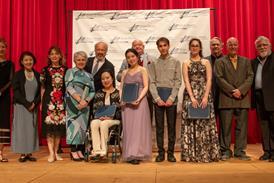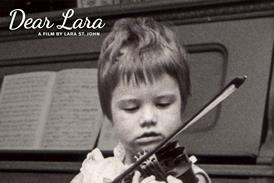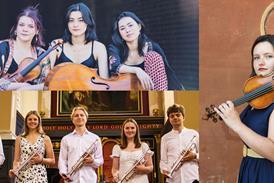In the first of two articles, violin teacher Zakhar Bron provides tips for practising the op.35 no.6 etude by Dont
This article is taken from the April 1999 issue of The Strad. To read the second article in this series from May 1999, click here.
Born in 1946 in Uralsk, Kazakhstan, Zakhar Bron moved to Novosibirsk, where he combined a teaching and performing career before reaching international fame as the teacher of Siberian violinists Maxim Vengerov and Vadim Repin. Having taught at the Lubeck Musikhochschule, he is now based in Cologne. His teaching is based on the classical Russian violin school, following his own studies with Igor Oistrakh.
Bron’s first published book is Etiiden-kunst (Art of the Etude), from which this study is taken. It includes commentaries on etudes by Dont, Paganini and Wieniawski, together with exercises designed to save time and energy’ with focused and conscious practice.
This Dont study op.35 no.6 Allegretto scherzoso concentrates on
1. Co-ordination
2. Speed and mobility of fingers when executing trills
Co-ordination
The most frequent mistake made by pupils working on co-ordination is found in the almost automatic accent placed by the bow on the last note of each group:

To avoid this I recommend playing the figuration by isolating each first note:

Then try to continue the bowing in a similar way, irrespective of what the left hand is doing:

A further theme of importance is bow division This study can be practised in the upper and lower half of the bow or with the whole bow, but never in the middle. The middle of the bow could be designated as a zone not recommended for pupils. When playing at the tip or in the upper half of the bow the muscles of the lower arm are engaged. However when playing at the frog both shoulder and upper-arm muscles come into action. In the middle, the lower-arm, shoulder and upper-arm muscles cannot work independently of each other; in this way co-ordination is made additionally difficult. For this reason I call the middle of the bow a ”neutral zone”, even when this area can be of great use under other conditions.
Speed and mobility of fingers when trilling
There are different exercises for training the fingers:

(a) Increasing the number of notes per group: first four, then six, then eight and so on:

Co-ordination (b) Using clotted rhythms to increase speed and mobility of trills:
With regard to the left hand, there are two important aspects to all the exercises: the positioning of the hand and the angle of the fingers. The pupil must assume the correct hand position over the strings, even before the fingers are put on the strings. If we analyse each musical group separately, we will notice that tire distances between the first and fourth fingers vary, sometimes when playing a fourth and occasionally when playing a third. The same applies to the distance between the second and third or the third and fourth fingers which lie either a semitone or a tone apart. In all cases the hand position should be prepared while tire fingers are still in the air:

Finally I also recommend that a feeling of legato in the left hand should be retained:

And again:

Translated by Evelyn Chadwick
© 1998 Ries 6 Erler, Berlin
Technique: Playing with expression

How to build an emotional connection with music that shines through in every note
- 1
- 2
- 3
- 4
- 5
 Currently
reading
Currently
reading
Violin Masterclass: Co-ordination and Trilling in Dont's Etude op.35 no.6
- 7
- 8
- 9
- 10






























































No comments yet